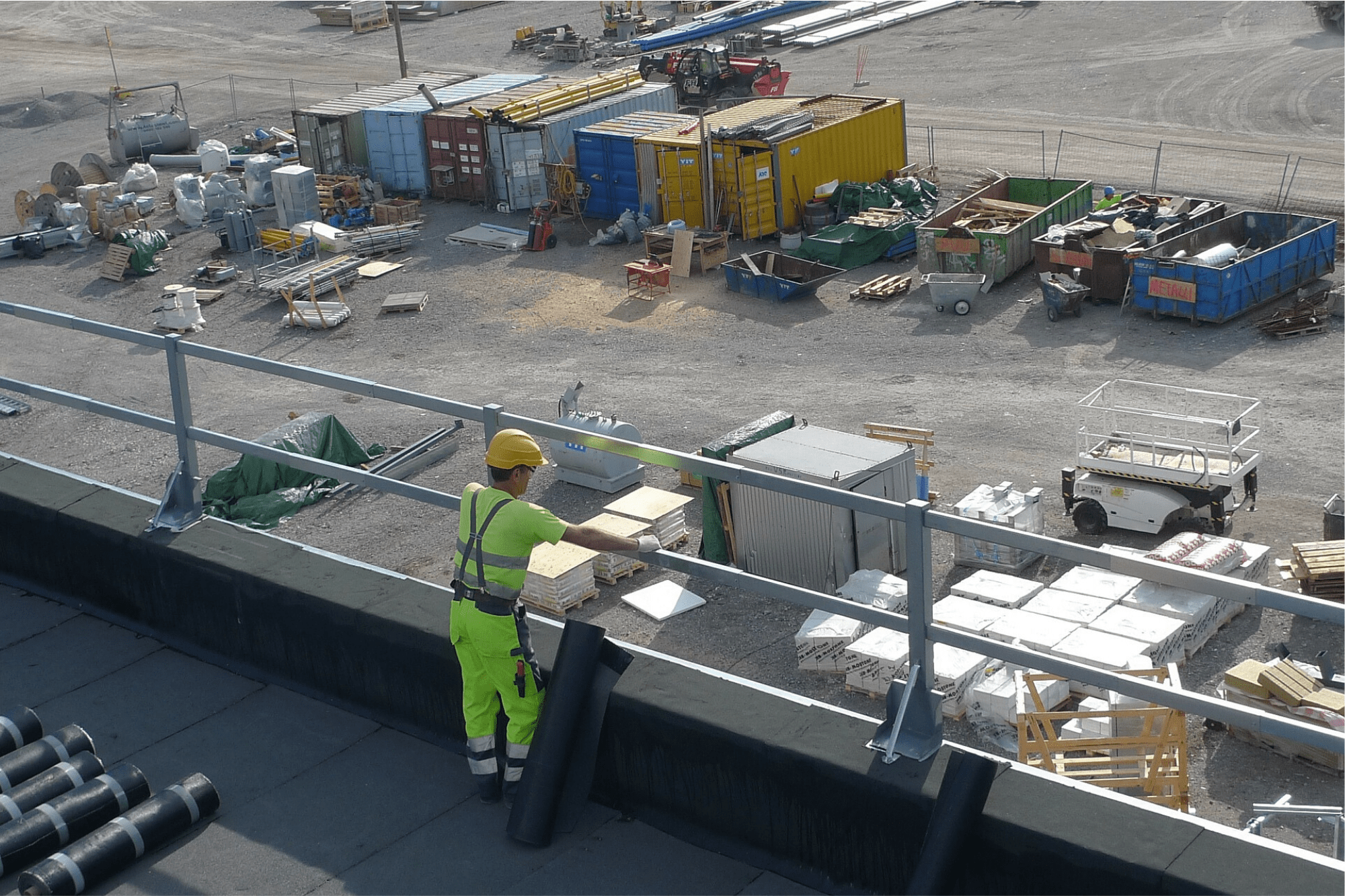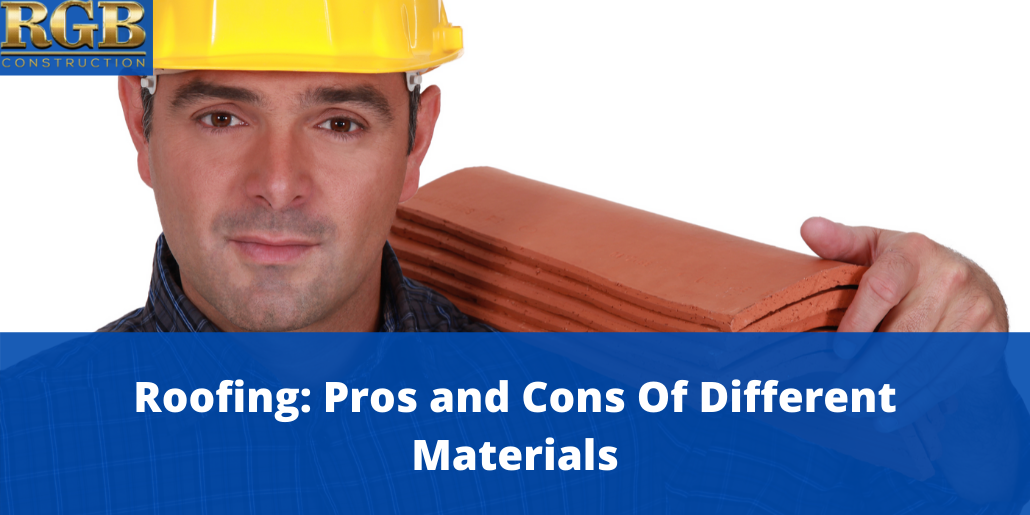Your roof is a critical part of the structure of your home or building. With all of the different materials to chose from, deciding what kind of roof you want can be a daunting task. At RGB, we know what an important decision this is, and we want you to have all of the information you need to make the right choice for your home or business. Today, we’re looking at some of the most common materials for sloped roofs and weighing their pros and cons.
Criteria
We’ll be looking at these with some key criteria in mind, and we’re going to be fair when it comes to citing the cons of all these materials.
- Aesthetic – The look of your roofing materials matters, and it matters a lot. You want your roof to look good, improving your curb appeal. If your curb appeal isn’t what it should be, you may face HOA problems or contempt from neighbors whose property values your poor curb appeal are negatively impacting.
- Weight – The heavier something is, the less extra weight a roof can withstand when winter comes, or you need to walk on your roof. Weight also makes it more expensive to install because, of course, people expect to be paid more to work with such heavy material.
- Lifespan – Lifespan matters, because you want your roof to stay strong, attractive, and intact for many years. It won’t do to have to repair or replace your roof constantly. It quickly becomes less than cost-effective and may be signs of more significant problems.
- Combustibility – While a combustible material isn’t a deal-breaker, avoiding combustible roofing materials isn’t a bad idea, for obvious reasons.
- Cost – Cost is, of course, a big factor. You want materials within your budget, which may override some of the other concerns. However, cheaper materials do tend to have a shorter lifespan, be more limited in their aesthetic, and be more on the combustible side.
Asphalt Shingles
Asphalt shingles aren’t the oldest material still used, but they’ve been around long enough that when people picture roofs, they tend to envision some form of these. Asphalt shingles are made of fibrous material (often fiberglass), crushed stone and asphalt, and an adhesive layer underneath. In general, they come in two forms – three-tab, which are the cheaper, thinner ones used most commonly. The other is architectural shingles, which tend to be thicker and have more elaborate shapes (such as the scale shape in some Victorian and gothic architecture).
Pros
- Very affordable, at least when it comes to three-tab shingles. Architectural are costlier but still cheaper than many other materials.
- Very light-weight, and compatible with most sloped roofs.
- Very easy to install, with a decent lifespan.
- Variety in color and style means a lot of aesthetic potential.
Cons
- Lifespan may be decent but is shorter than just about anything else on this list.
- Combustible, though not as much so as another on this list.
- Fragile – they’re designed to break/wear out/fall away when old.
Clay Tile
Clay tile is often associated with exotic locales and cultures, such as the Mediterranean, the Tropics, and the Southwest of the US. It’s often paired with stucco to complete this look and dates back to at least classical Greece, if not further back.
Clay tile is gorgeous, full of character, and very iconic.
Pros
- Lasts up to a century.
- Not combustible.
- Variety of colors plus a classic and distinct look makes for some fantastic aesthetics.
- Very low maintenance, needing only to be cleaned periodically. A pressure washer, used with care, will work for this.
Cons
- It’s very heavy, and it’s very fragile while being installed.
- It requires skill to install compared to some other materials.
- It’s very costly.
Concrete Tile
This one’s a little on the newer side, at least by way of adoption. Cement has some of the benefits of stone, being durable, resistant to sun, good at insulating, and capable of diverse pigmentation and visual style.
Pros
- Very long lifespan, and very little maintenance.
- Durable, even during installation.
- Variety of styles and colors not found in other materials.
- Not combustible.
Cons
- Tremendously heavy and costly.
- Your roof may need to be reinforced for it.
- It’s not as available.
 Slate Tile
Slate Tile
Slate tile or shake is also very old, dating to at least the Medieval period if not further back. It has a unique look to it, evocative of old-world Europe.
Pros
- Extremely long lifespan.
- Very attractive and timeless.
- Easy to install for a good roofer.
- Low maintenance.
- Not combustible.
Cons
- Limited styles and colors with natural stone.
- Likes to cultivate algae and moss.
- Likes to cultivate ice.
- Very heavy, fragile during installation, and costly.
Wood Shingles
Wood shingles, which aren’t always shake-style, with uniform ones reminiscent of asphalt shingle also being commonplace. Wood also is evocative of the rustic old world or the maritime cultures of New England or the Pacific Northwest.
Pros
- Long-lasting.
- Light-weight, easy for a skilled roofer to install.
- Can be stained a variety of colors for striking looks.
Cons
- Expensive.
- Very combustible.
- Not as durable as others.
Metal
Metal isn’t just corrugated panels on sheds or barns – oh no. Metal shingles and panels can take on all kinds of striking looks, and it’s growing in a lot of popularity.
Pros
- Lasts eons.
- Varieties of form and color styles are the most diverse of any material.
- Little maintenance.
- Not combustible.
Cons
- It does have one maintenance issue – it may need to be painted now and then.
- It’s not easy to install.
- It’s tremendously heavy.
- It’s costly.
Your roof material is important – don’t just guess blindly. Fill out our contact form today and let us help!







